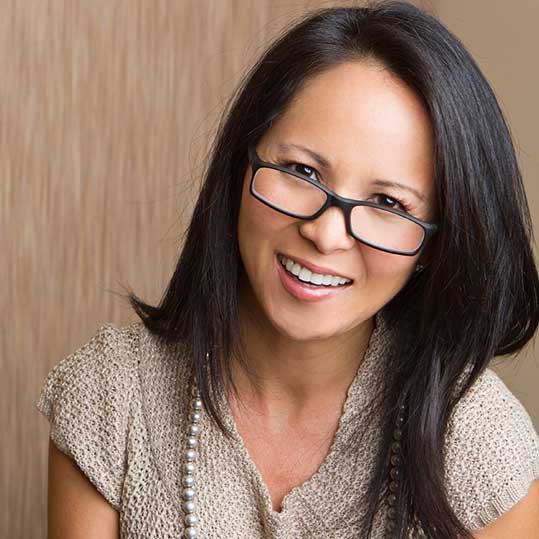Take our hormone questionnaire
If you’re experiencing any symptoms, complete our short quiz.
Or get in touch now!
Head straight to our contact page and complete our form there. Our team will be in touch right away.
Learn more about Bioidentical Hormone Therapy and if or how it may provide relief for any of your menopausal symptoms.
Ask us how you can get a fresher look through the simple use of Injectable Aesthetics.
Learn more about why you may be having increasing difficulty losing weight, what you can do about it and how we may be able to help.
Thyroid dysfunction is common amongst women over fifty years old. Our women’s hormone experts can help you better understand your symptoms and provide treatment.
Find out if peptide anti-aging therapy is a good option to delay the signs of aging and improve your quality of life.
Search for a symptom below:
No problem! No two women are the same which is why at Hormonally Balanced we tailor therapy to the individual needs of our patients.
We are a private-pay concierge women’s health clinic in the Boston area that deals exclusively with women’s hormone replacement therapies.
Our all-female team is here to help, we provide a discreet community where our patients feel relaxed, heard and well taken care of.
Home » Bone Loss and Osteoporosis
A disease in which the bones lose mass and become weak is the simplest osteoporosis definition. People with it are at increased risk for fractures, including serious ones in the back or hips, with some not even knowing they have the disease until they experience one.
Women are at special risk for osteoporosis once they reach menopause. The good news is that you can take steps to reduce your risks. If you have already been diagnosed with osteoporosis, you can also seek treatments that reduce the rate of bone loss.

Bone loss gets worse during perimenopause and early menopause, thanks to the rapid decrease in estrogen during these years. As you lose estrogen in your 40s, you lose bone rapidly.
Unfortunately, many women don’t become concerned about the risk of osteoporosis until their 60s, losing a couple of decades in which they could have been taking steps to prevent bone loss.
Women should be proactive about the possibility of osteoporosis as soon as menopause begins. The period of early menopause, which typically occurs in the mid-40s, is prime time to ask your doctor for a bone density screening to assess your risks and take appropriate steps to protect your bones.
If you’re diagnosed with osteoporosis, you have three possible treatments available to you (and it’s possible to choose more than one). You can make lifestyle changes, specifically focusing on exercise, to strengthen your bones. You can choose from a variety of medications that treat osteoporosis in different ways. And you can seek out hormone replacement therapy, which treats the loss of estrogen that underlies the rapid bone loss that occurs at menopause.
The primary way you can protect your bones against osteoporosis is through weight-bearing exercise. Plan on walking, running, weightlifting, playing a sport or dancing three to four times every week. (Swimming is not a weight-bearing exercise.)
Weight-bearing exercises strengthen your bones as well as your muscles. In addition, exercise that focuses on balance and strength can help you avoid falling, so you’re less likely to break a bone.
You can also prioritize bone health by making sure you get enough calcium. The recommended daily allowance of calcium for those at risk of osteoporosis is 1,200mg per day. Add calcium to your diet by eating calcium-rich foods, including:
You can also take calcium carbonate or calcium citrate supplements to strengthen your bones. If you’re in your 50s or older, you shouldn’t take more than 2,000mg per day of calcium, as greater dosages can put you at risk for kidney stones.
Vitamin D supplements are also recommended for those trying to prevent bone loss. Your body needs adequate vitamin D to absorb the calcium that your bones need. Your body generates vitamin D adequately if you get enough sunlight, and you can also ingest vitamin D through eating eggs, dairy products fortified with vitamin D, and fatty fish, including salmon. However, many people need supplements to reach the recommended level of 600 IU daily.
If you smoke, quitting will make a big difference in your propensity for bone loss. Smoking decreases the production of estrogen, which helps protect your bones. Drinking too much alcohol can also be damaging to the bones.
Several classifications of medications are helpful in fighting osteoporosis. While bisphosphonates are the main type of medication for osteoporosis, other types of drugs are also helpful.
Bisphosphonates help build bone density. Women taking glucocorticoid medications, which provoke bone loss, should especially look into these medications, which are known to reduce the risk of spine, hip and other fractures. Among the top bisphosphonates are:
Other medications help prevent or slow the growth of osteoporosis in different ways. These include:
For many women, bone loss and osteoporosis are part of a complex of symptoms that start to plague them when menopause begins. For these women, who experience hot flashes, disturbed sleep, vaginal dryness, and other menopause-related symptoms, bone density medications may help osteoporosis, but leave all those other symptoms untouched.
For these women, hormone replacement therapy is likely to be the best choice because it addresses a myriad of related symptoms at the same time. Hormone therapy increases your level of estrogen, thus slowing the loss of bone mass that comes with menopause.

Throughout your life, your bones naturally produce new bone mass and lose older bone mass. Until your 30s, most people produce more bone mass than they lose. With aging, however, that production of bone mass slows down, and eventually, more bone mass is lost than is being produced.
Osteoporosis develops when the internal structure of your bones starts to weaken. The inner part of your bones is made of a sponge-like material that’s encased by the hard outer layer that we typically think of as bone. That sponge-like material, known as trabecular bone, naturally has some holes in it. When osteoporosis sets in, those holes get larger, weakening the bone’s structure.
The somewhat scary thing about osteoporosis is that often, it has no observable symptoms. Your bones can lose mass and become weakened without your being aware of what’s occurring in any way.
Often people only become aware that they have osteoporosis when they experience a fracture. Vertebrae collapse can also occur — but often, the only sign that this is occurring is loss of height. Vertebrae collapse can also manifest in a stooped posture or intense back pain, but these symptoms typically only occur when previously unnoticed osteoporosis is far advanced.
Osteoporosis develops when the internal structure of your bones starts to weaken. The inner part of your bones is made of a sponge-like material that’s encased by the hard outer layer that we typically think of as bone. That sponge-like material, known as trabecular bone, naturally has some holes in it. When osteoporosis sets in, those holes get larger, weakening the bone’s structure.
The people with the greatest risk for developing osteoporosis and experiencing bone loss are women over 50. Women are four times as likely to develop osteoporosis as men are, with about half of all women over 50 experiencing a fracture as a result. This occurs in part because women’s bones are lighter and thinner to begin with — and the fact that women typically live longer than men gives them more time for the disease to grow.
White and Asian women are more likely to develop osteoporosis than women of other ethnicities. In addition, smaller, thinner people (men as well as women) are more likely to develop osteoporosis, in part because they have less bone to lose.
Osteoporosis appears to have a genetic component. If your parents or grandparents had a history of osteoporosis or broken bones (especially broken hips or backs), you are probably at greater risk. If you have a history of broken bones yourself, you should be tested for osteoporosis.
On top of that, you’re at risk of osteoporosis if you regularly take certain medications. Steroid use, in particular, increases the risk of osteoporosis. Anticoagulants (blood thinners) also increase bone loss, as do some thyroid medications and some anticonvulsant medications used to treat seizures. If you’re being treated for breast cancer, you may also be at heightened risk for osteoporosis. Talk to your doctor about how to decrease your risk of osteoporosis or bone loss if you take any of these medications regularly.
When trying to prevent bone loss, hormone replacement therapy is often the most appropriate choice for menopausal women experiencing other symptoms of menopause. Some women may end up using multiple options to treat osteoporosis, especially because bone loss will start up again once a woman stops her hormone replacement therapy.
While women with a history of certain cancers, liver disease or heart disease may not be good candidates for hormone replacement therapy, most women find it very effective in treating osteoporosis along with other menopausal symptoms.
Hormone replacement therapy can be delivered via patch, a pill or a gel. Even low doses have a marked effect on bone loss. Your doctor can help you find the right dosage level for your body. You can keep taking hormones for many years, as long as they’re benefiting your body. If you stop hormone replacement therapy and are at risk for osteoporosis, your doctor may recommend a different treatment.
The earlier, the better. That’s the rule when it comes to hormone replacement therapy for osteoporosis and other menopausal symptoms. The older you get, the more at risk you are for broken bones due to osteoporosis. So it just makes sense that the earlier you start hormone replacement therapy, the better off your bones will be.
At Hormonally Balanced, we want to help you make the right decisions regarding the hormonal changes you face at menopause. We’ll help assess your osteoporosis symptoms and walk you through all phases of treatment. Contact us today to learn how our anti-aging treatments may help with your concerns about bone loss.
If you’re experiencing any symptoms, complete our short quiz.
Head straight to our contact page and complete our form there. Our team will be in touch right away.